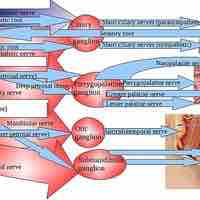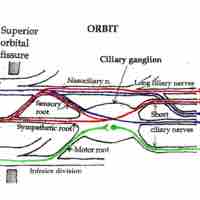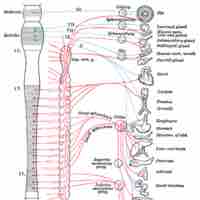Section 2
Structure of the Autonomic Nervous System
By Boundless

In the autonomic nervous system (ANS), nerve fibers that connect the central nervous system to ganglia are known as preganglionic fibers.

Autonomic ganglia are clusters of neuron cell bodies that transmit sensory signals from the periphery to the integration centers in the CNS.

In the autonomic nervous system, fibers from the ganglion to the effector organ are called postganglionic fibers.

Autonomic plexuses are formed from sympathetic and parasympathetic fibers that innervate and regulate the overall activity of visceral organs.
Parasympathetic ganglia are the autonomic ganglia of the parasympathetic nervous system that lie near or within the organs they innervate.

Sympathetic ganglia are the ganglia of the sympathetic nervous system that initiate fight-or-flight, stress-mediated responses.

Autonomic reflexes are unconscious motor reflexes relayed from the organs and glands to the CNS through visceral afferent signaling.